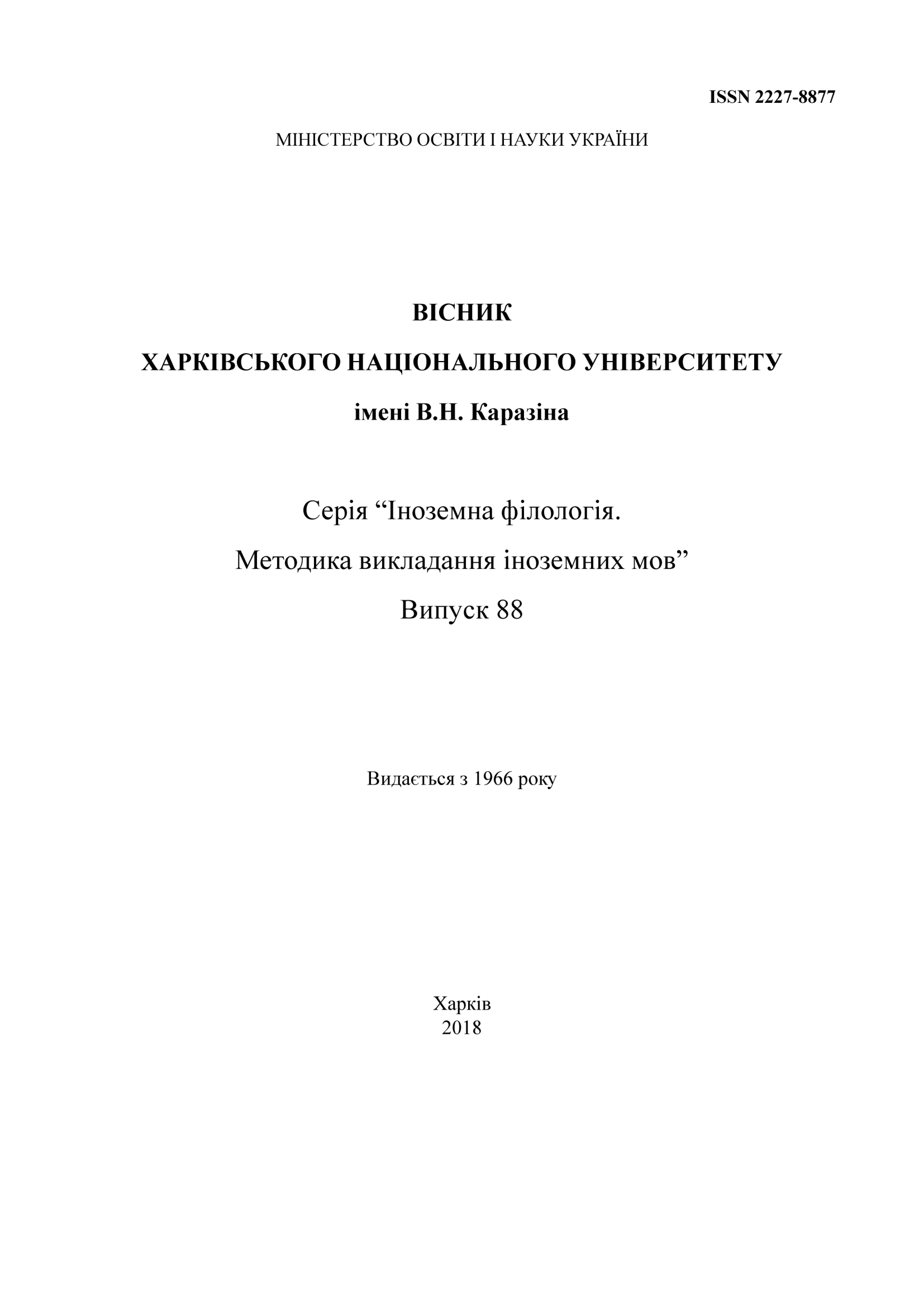Інтертекстуальність і роль семантичних маркерів при перекладі спеціалізованих соціологічних текстів
Анотація
У статті йдеться про інтертекстуальність у перекладознавчому аспекті. Визначено роль семантичних маркерів у перекладі спеціалізованих, зокрема соціологічних текстів. Відзначається притаманні семантичним маркерам риси, які можуть підвищити або, навпаки, знизити здатність читача отримати повний доступ до їхнього змісту, такого як специфічна для сфери лексика чи термінологія, і до традиційних текстових форматів. Досліджується явний міжтекстовий зв’язок або цитування, тобто, включення інших текстів при побудові спеціалізованого тексту – традиційний міжтекстовий формат, що є відмітною характеристикою написання спеціалізованих текстів, особливо наукових. Увагу зосереджено на цитуваннях, які, головним чином, вживаються для тлумачення, і показано, як семантичні маркери можуть бути корисними для перекладача спеціалізованих соціологічних текстів у фазі аналізу тексту, що передує перекладу. Люди, які не є спеціалістами у певній сфері, такі як перекладачі спеціалізованих текстів, можуть мати проблеми з повним розумінням змісту спеціалізованих текстів, особливо якщо останні написано спеціалістом у цій сфери для таких же спеціалістів. Підкреслено, що семантичні маркери поводять себе як «інтерактивні ресурси», що дозволяють тому, хто пише текст, контролювати потік інформації, задовольняючи вірогідні потреби в додатковій інформації з боку «уявних» читачів. Як семантичні маркери, цитування набувають подвійної діалогічної властивості: вони орієнтовані на авторів попередніх текстів, на яких вони посилаються, і з якими вони працюють над значенням термінів, але вони також «взаємодіють» із читачем, реагуючи на можливі питання або вірогідні потреби у більш точній семантичній або концептуальній інформації.
Завантаження
Посилання
Грек Л. В. Інтертекстуальність як проблема перекладу (на матеріалі англомовних перекладів української постмодерністської прози): дис. … канд. філол. наук : 10.02.16 / Грек Л. В. К., 2006. 208 с.
Каширіна І. В. Особливості реалізації категорії інтертекстуальності в жанрі наукової статті. С. 17–18. Зб. тез доповідей щорічної наук-практ. конф. ЗНТУ. Т. 4: ЗНТУ, 2014. С. 17–18.
Кристева Ю. Бахтин, слово, диалог и роман // Вестник МГУ. Серия 9. Филология. 1995. № 1. С. 97–124.
Приходько В. Б. Інтертекстуальність як проблема перекладу. Вісник дніпропетровського університету імені Альфреда Нобеля. Серія «філологічні науки». 2017. № 1 (130). С. 262–266.
Сунько Н. О. Алюзія як маркер інтертекстуальності в англійськомовному газетному заголовку. Автореф. дис. … канд. філол. наук : 10.02.04. Чернівці, 2016. 23 с.
Collet, Tanja. “La manière de signifier du terme en discours.” Meta: Translators’ Journal. 2009. 54(2), 279–294.
Fairclough, Norman. “Intertextuality in Critical Discourse Analysis.” Linguistics and Education. 1992. 4, 269–293.
Harwood, Nigel. “Citation Analysis: a Multidisciplinary Perspective on Academic Literacy.” Mike Baynham et al. (eds). Applied Linguistics at the Interface. London: BAAL and Equinox. 2004. 79–89.
House, Juliane. “Translation Quality Assessment: Linguistic Description versus Social Evaluation.” Meta: Translators’ Journal. 2001. 46(2), 243–257.
Kaplan, Norman. “The Norms of Citation Behaviour: Prolegomena to the Footnote.” American Documentation. 1965. 16(3), 179–184.
Lörscher, Wolfgang. Translation Performance, Translation Process, and Translation Strategies. A Psycholinguistic Investigation. 1991. Tübingen: Gunter Narr.
Meyer, Ingrid and Pamela Russell. “The Role and Nature of Specialised Writing in a Translation-specific Writing Program.” TTR: traduction, terminologie, redaction. 1988. 1(2), 114–124.
Nord, Christiane. Text Analysis in Translation. Theory, Methodology, and Didactic Application of a Model for Translation-Oriented Text Analysis. 2005. Amsterdam: Editions Rodopi B.V.
Pearson, Jennifer. Terms in Context. Amsterdam/Philadelphia: John Benjamins. 1998.
Poncharal, Bruno. “Le Social Science Translation Project et la traduction des sciences humaines.” Hermès. 2007. 49, 99–106.
Price, Joshua M. (2008). “Translating Social Science: Good versus Bad Utopianism.” Target 20(2), 348-364.
Stratford, Madeleine. “Au tour de Babel! Les défis multiples du multilinguisme.” Meta. 2008. 53(3): 457–470.
Thompson, Paul and Chris Tribble. “Looking at Citations: Using Corpora in English for Academic Purposes.” Language Learning & Technology. 2001. 5(3), 91–105.
Wallerstein, Immanuel. “Scholarly Concepts: Translation or Interpretation?” Marilyn Gaddis Rose (ed.). Translation Horizons Beyond the Boundaries of Translation Spectrum. Translation Perspectives IX. Binghamton (NY): State University of New York at Binghamton, 1996. 107–117.




